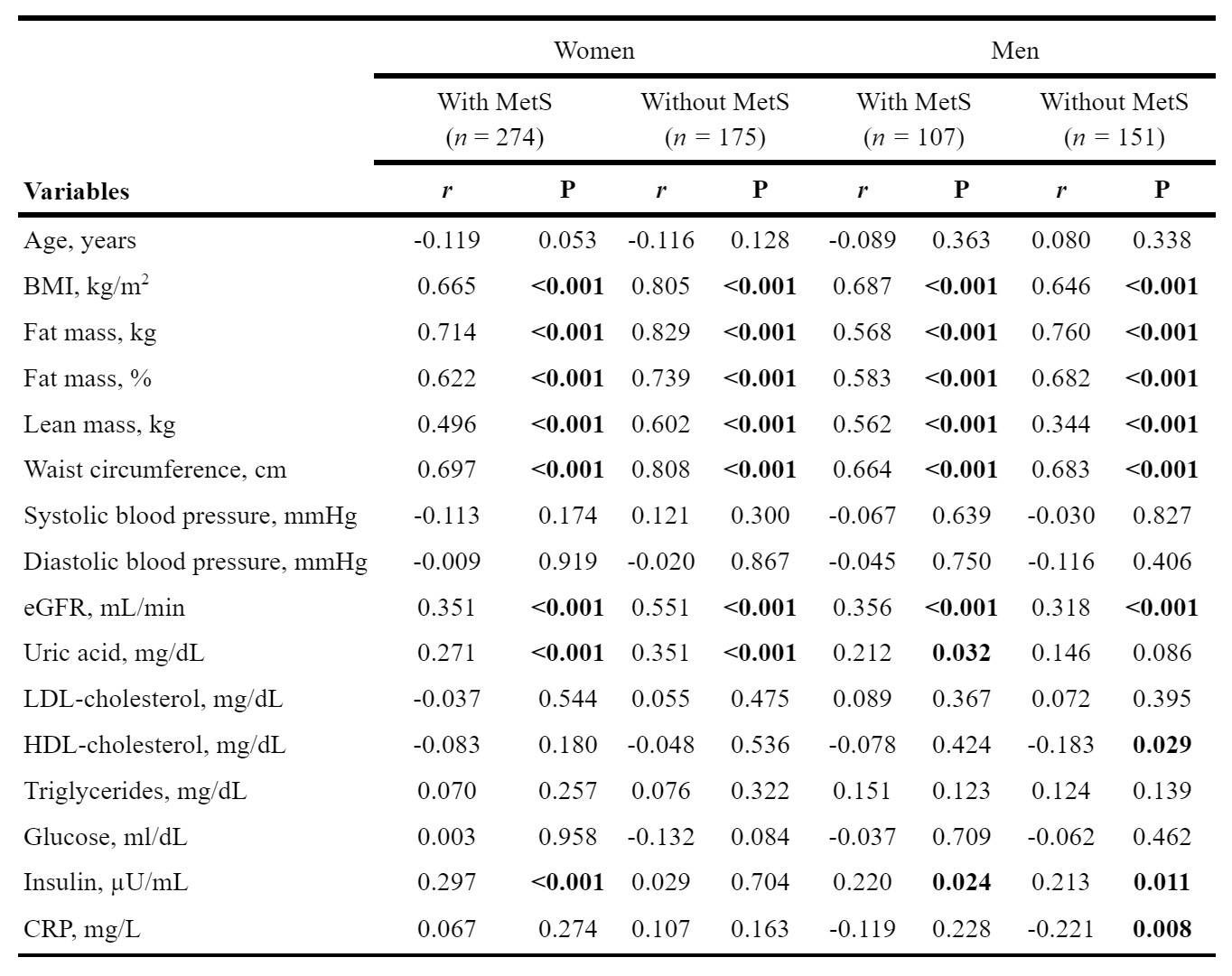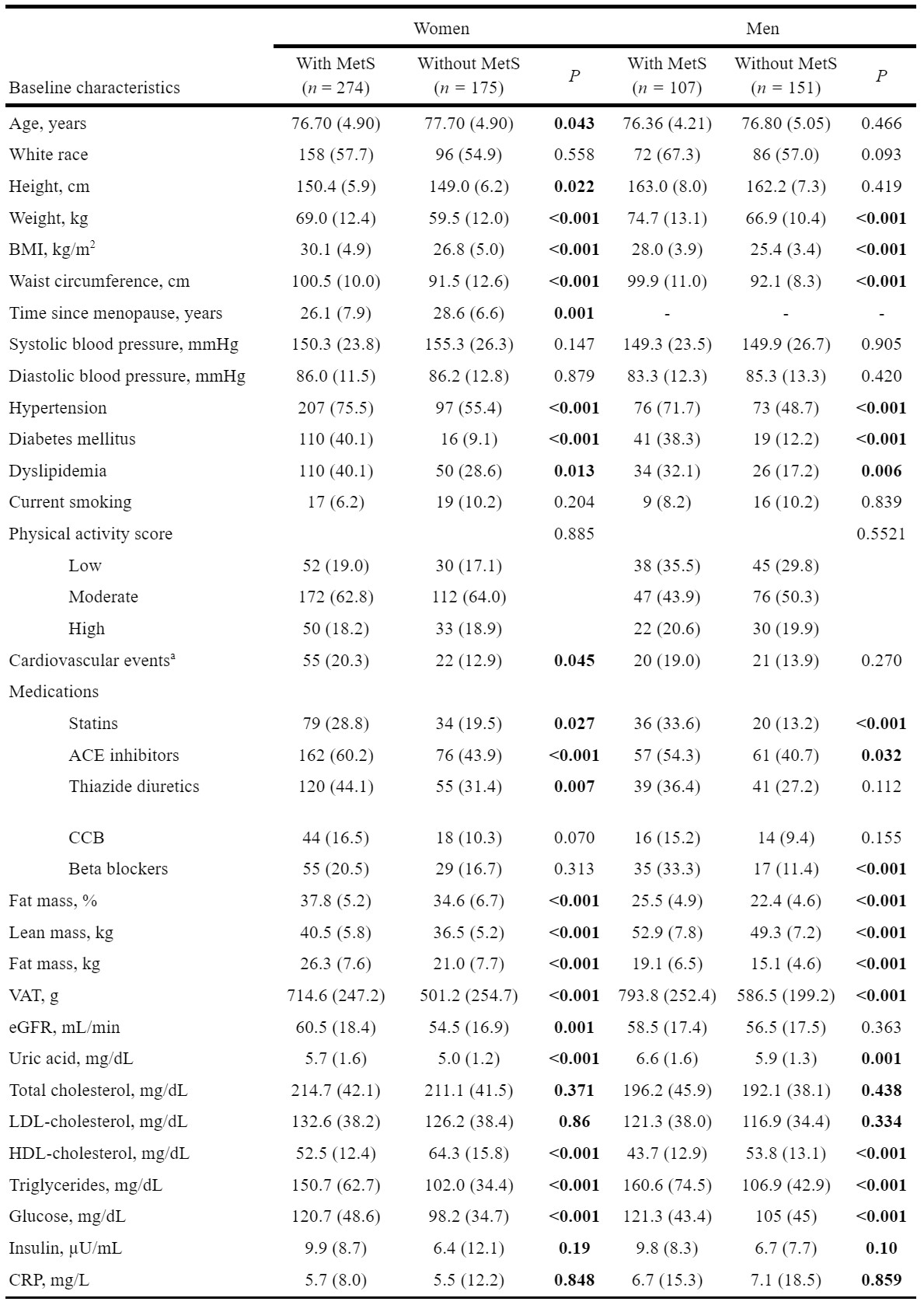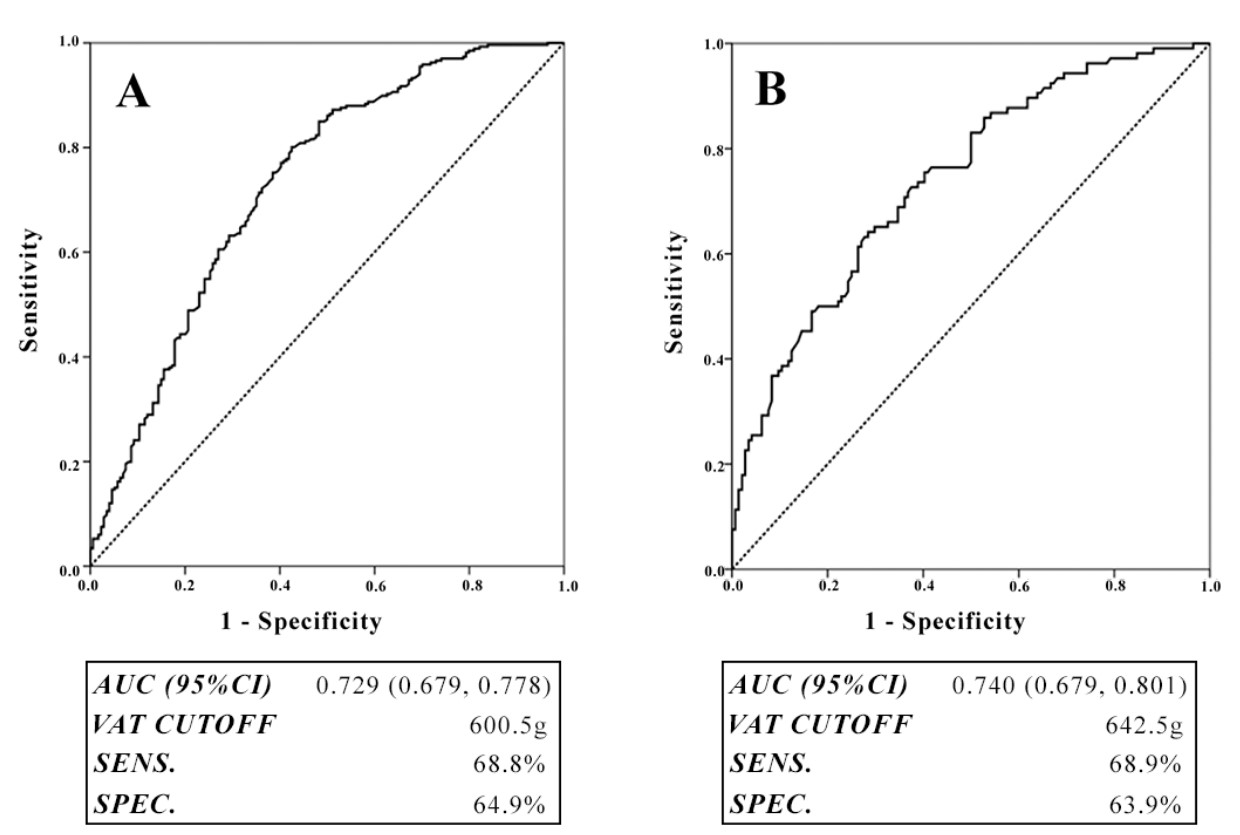Session Information
Session Type: Poster Session B
Session Time: 10:30AM-12:30PM
Background/Purpose: To establish optimal cutoffs for visceral adipose tissue (VAT) to predict cardiometabolic risk in a low-income elderly Brazilian cohort, utilizing dual-energy X-ray absorptiometry (DXA) to estimate visceral fat.
Methods: A total of 449 women and 258 men (≥65 years) from the community were enrolled in this cross-sectional study. Participants underwent clinical and laboratory evaluations, along with body composition analysis using iDXA, GE-Lunar. VAT was measured in the android region of the DXA scan. Metabolic Syndrome (MetS) was diagnosed using NCEP-ATPIII criteria. Multivariate logistic regression analyzed the relationship between VAT and MetS. Receiver-operating characteristic (ROC) curve analysis evaluated VAT’s predictive accuracy for MetS, with optimal cutoffs determined by Youden’s test to balance sensitivity and specificity.
Results: After adjustments for potential confounders, multivariate analysis showed that VAT was independently associated with MetS in both women (OR 1.33, 95%CI 1.16-1.54, per each 100g increase) and men (OR 1.41, 95%CI 1.15-1.72). Optimal VAT cutoffs to predict MetS were 600.5g for women (AUC= 0.729) and 642.5g for men (AUC= 0.740). Subanalysis for non-overweight/non-obese individuals yielded lower VAT cutoffs.
Conclusion: Exceeding 600g of VAT was linked to increased MetS odds in community-dwelling older adults. With an AUC value surpassing 0.70, indicating strong discriminative ability, VAT measured by DXA holds promise for assessing cardiometabolic risk in the elderly. Further longitudinal studies are needed to investigate VAT’s impact on major cardiovascular event incidence in this demographic.
MetS: Metabolic syndrome. BMI: body mass index. ACE: angiotensin-converting-enzyme. CCB: calcium channel blockers. VAT: visceral adipose tissue. eGFR: estimated glomerular filtration rate. LDL: low-density lipoprotein. HDL: high-density lipoprotein. CRP: C-reactive protein.
a. Cardiovascular events: myocardial infarction, unstable angina and stroke.
MetS: Metabolic syndrome. BMI: body mass index. ACE: angiotensin-converting-enzyme. CCB: calcium channel blockers. VAT: visceral adipose tissue. eGFR: estimated glomerular filtration rate. LDL: low-density lipoprotein. HDL: high-density lipoprotein. CRP: C-reactive protein.
a. Cardiovascular events: myocardial infarction, unstable angina and stroke.
A: female. B: male. AUC: area under the curve. CI: confidence interval. VAT: visceral adipose tissue. SENS.: sensitivity. SPEC.: specificity.
To cite this abstract in AMA style:
Vansuita Valente G, Machado L, Franco A, Caparbo V, Takayama L, Lins Fernandes A, Figueiredo C, Pereira R, Domiciano D. Visceral Adipose Tissue Measured by DXA Predicts Metabolic Syndrome in Low-Income Community-Dwelling Elderly: Insights from the São Paulo Ageing & Health (SPAH) Study [abstract]. Arthritis Rheumatol. 2024; 76 (suppl 9). https://acrabstracts.org/abstract/visceral-adipose-tissue-measured-by-dxa-predicts-metabolic-syndrome-in-low-income-community-dwelling-elderly-insights-from-the-sao-paulo-ageing-health-spah-study/. Accessed .« Back to ACR Convergence 2024
ACR Meeting Abstracts - https://acrabstracts.org/abstract/visceral-adipose-tissue-measured-by-dxa-predicts-metabolic-syndrome-in-low-income-community-dwelling-elderly-insights-from-the-sao-paulo-ageing-health-spah-study/



